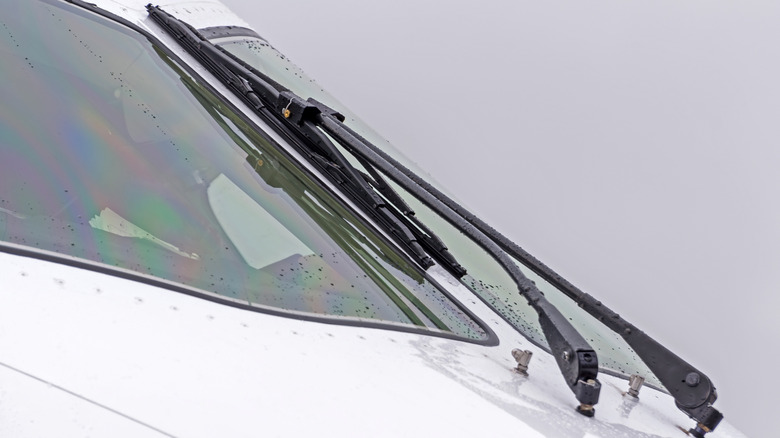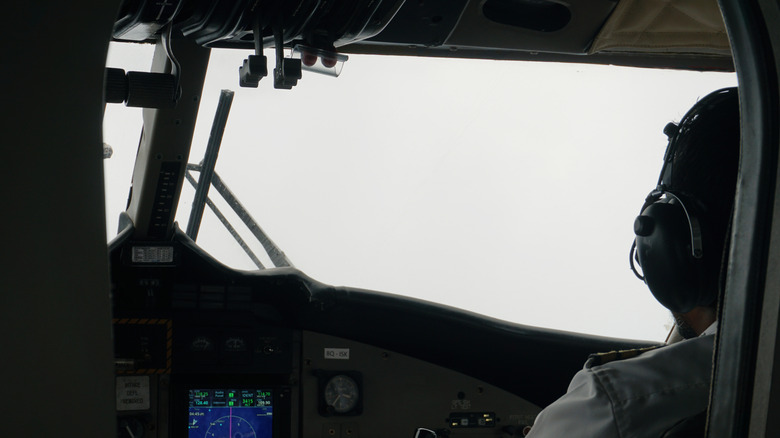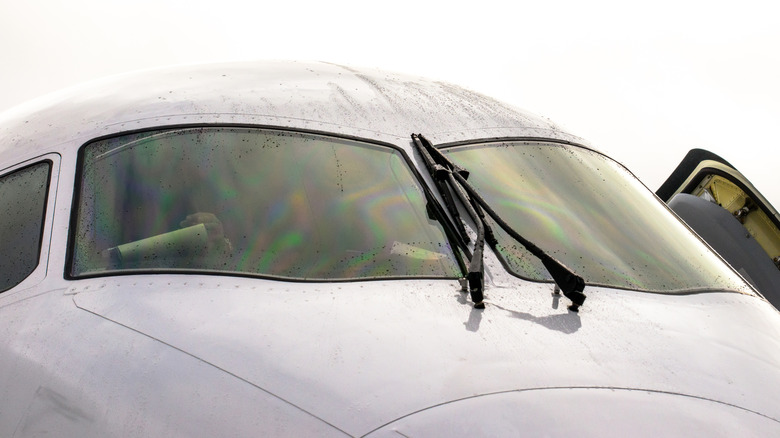Yes, Airplanes Have Windshield Wipers (But Here's Why Pilots Won't Often Use Them)
Airplanes have windshield wipers, and no, they're not just decorative. Most commercial jets, like the Boeing 737 or Airbus A320, come equipped with electric or hydraulic windshield wipers mounted at the base of the cockpit windows. But while they serve the same core purpose as the ones on your car — to improve visibility in rain, as well as remove snow and debris from the windshield — they're not as widely used in flight as you might think.
Airplane wipers are mostly reserved for ground operations like taxiing, takeoff, and landing in bad weather. Once an aircraft hits cruising altitude, they're usually switched off. This is because most aircraft wiper systems are only certified for use at speeds below 180 to 200 knots, beyond which they risk mechanical failure or excessive wear.
Additionally, using wipers in flight can be extremely noisy, and pilots prefer to keep them switched off. That might seem counterintuitive, but at high altitudes and speeds, airplanes have something far more powerful than wipers working in their favor.
What clears an aircraft's windshield mid-flight?
At cruise speeds of 450 to 500 knots, rain isn't a visibility problem. The sheer velocity of the air moving over the cockpit windows blows water away almost instantly. There's no time for droplets to bead up or streak across the glass — they're swept away by aerodynamic force before they even settle.
This effect is enhanced by the shape and finish of the windshield itself. Aircraft windshields are steeply angled and highly polished, often treated with hydrophobic coatings or waxes that cause water to bead up and run off with minimal resistance. These design features work in tandem with airflow to keep visibility clear, without the need for mechanical systems at high altitude.
In addition to wipers, aircraft are equipped with other rain removal systems, though all are intended strictly for use on the ground or during low-speed flight. Pneumatic rain removal systems use high-velocity air directed across the windshield to break raindrops and blow them away. This air is supplied either by electric blowers, or bleed air tapped from the turbine engine. Some aircraft also use chemical rain repellents that can be applied to the outer surface of the windshield using buttons in the cockpit. They help reduce surface tension, allowing water to spread into a thin film or bead up and roll off more easily.
However, none of these systems are effective during cruise. Above roughly 200 knots, they're either unnecessary or automatically disabled to prevent damage or inefficiency.
Why haven't aircraft wipers been removed or replaced entirely?
The value of windshield vipers lies on the ground and in the moments closest to it: taxiing, takeoff, final approach, and landing in poor weather. Aircraft move at speeds of about 30 knots on the ground, which isn't fast enough to shed water naturally — especially during turns or while following complex taxiway markings. In these cases, the wipers offer immediate and reliable clearing.
Even during descent, wipers can be critical. A pilot flying through dense rain may activate them on approach to ensure the runway remains visible. If electrical or anti-ice systems fail, the wipers still function, which makes them invaluable in safety-critical operations.
From a pilot's perspective, wipers are simple, direct, and reliable: They don't rely on sensors, computers, or engine configurations. They work with a switch, and when seconds matter, that kind of responsiveness is invaluable. Cockpit controls allow pilots to turn the wipers on or off and select a speed setting depending on the weather conditions. For example, the Boeing 737 features a slow and fast mode at around 120 and 180 strokes per minute, respectively.
With thoughtful design improvements, wipers can do more than just help with visibility; they can boost efficiency too. For example, the U.S. Air Force tested a change to the KC-135 Stratotanker's wiper positioning during cruise. By reorienting the blades vertically instead, they found that drag could be reduced by 1% to save $7 million in annual fuel costs across the fleet. In a cockpit full of automation and layered systems, the humble wiper remains; not as a backup, but as a fail-safe.


